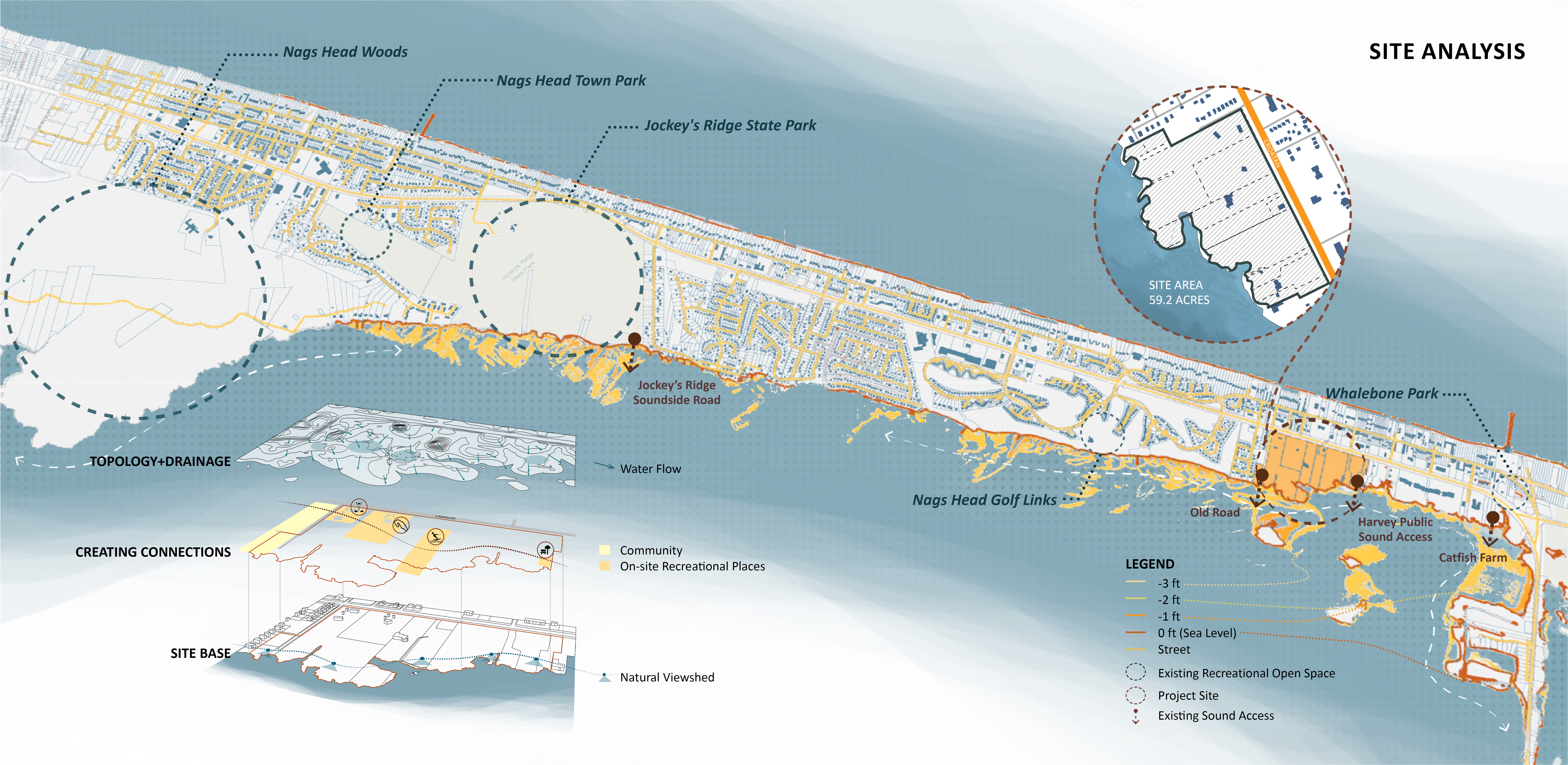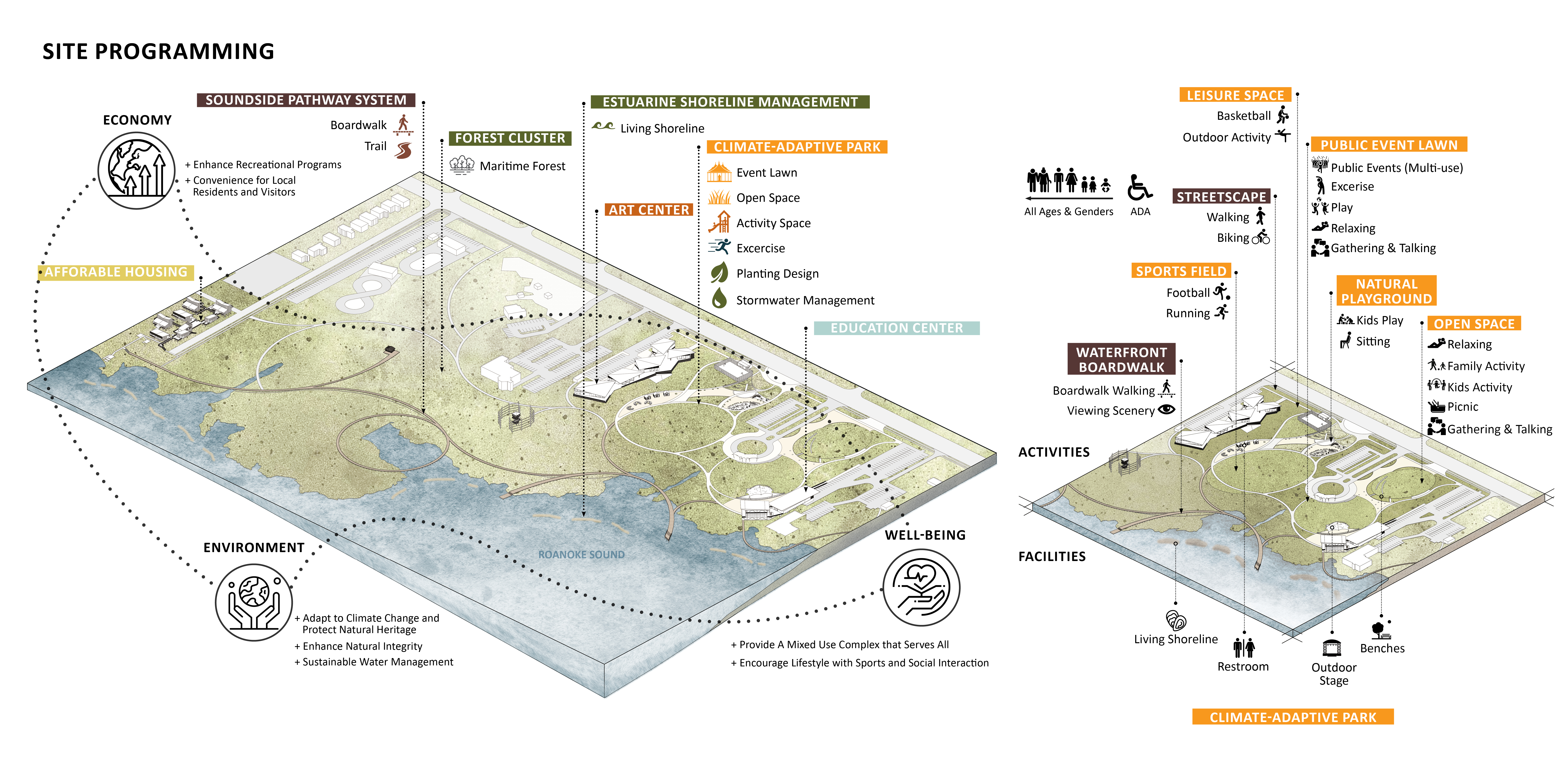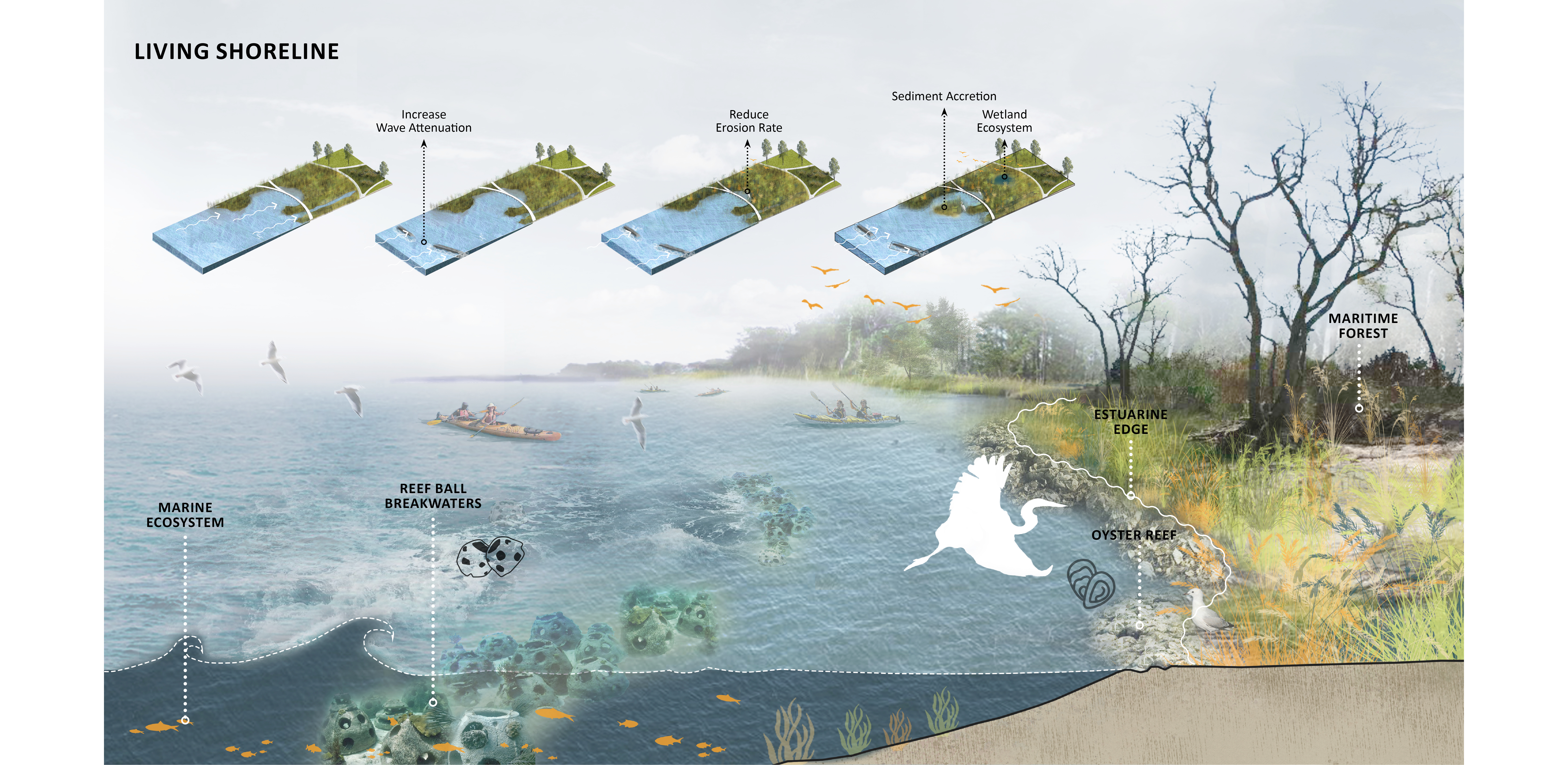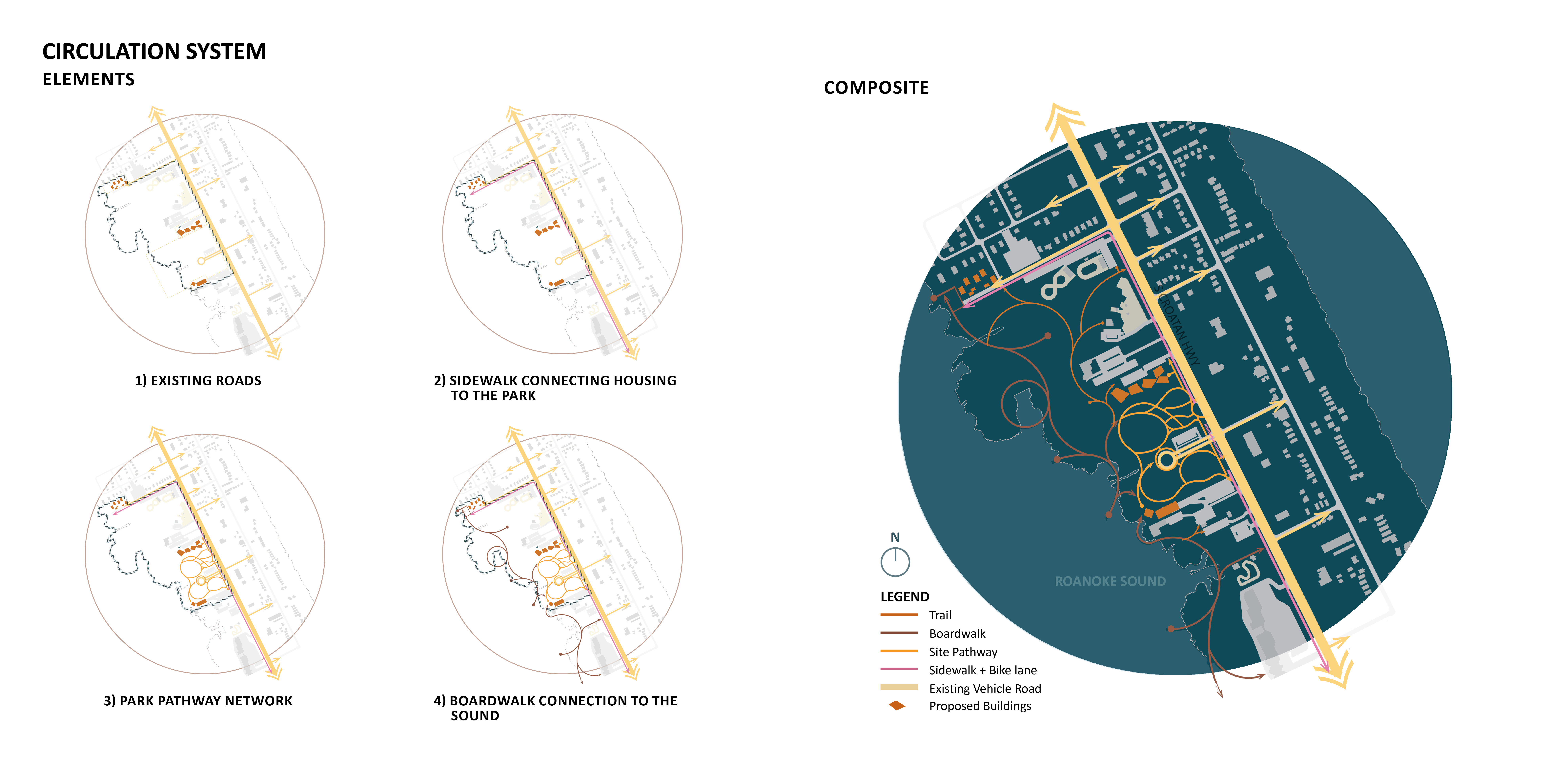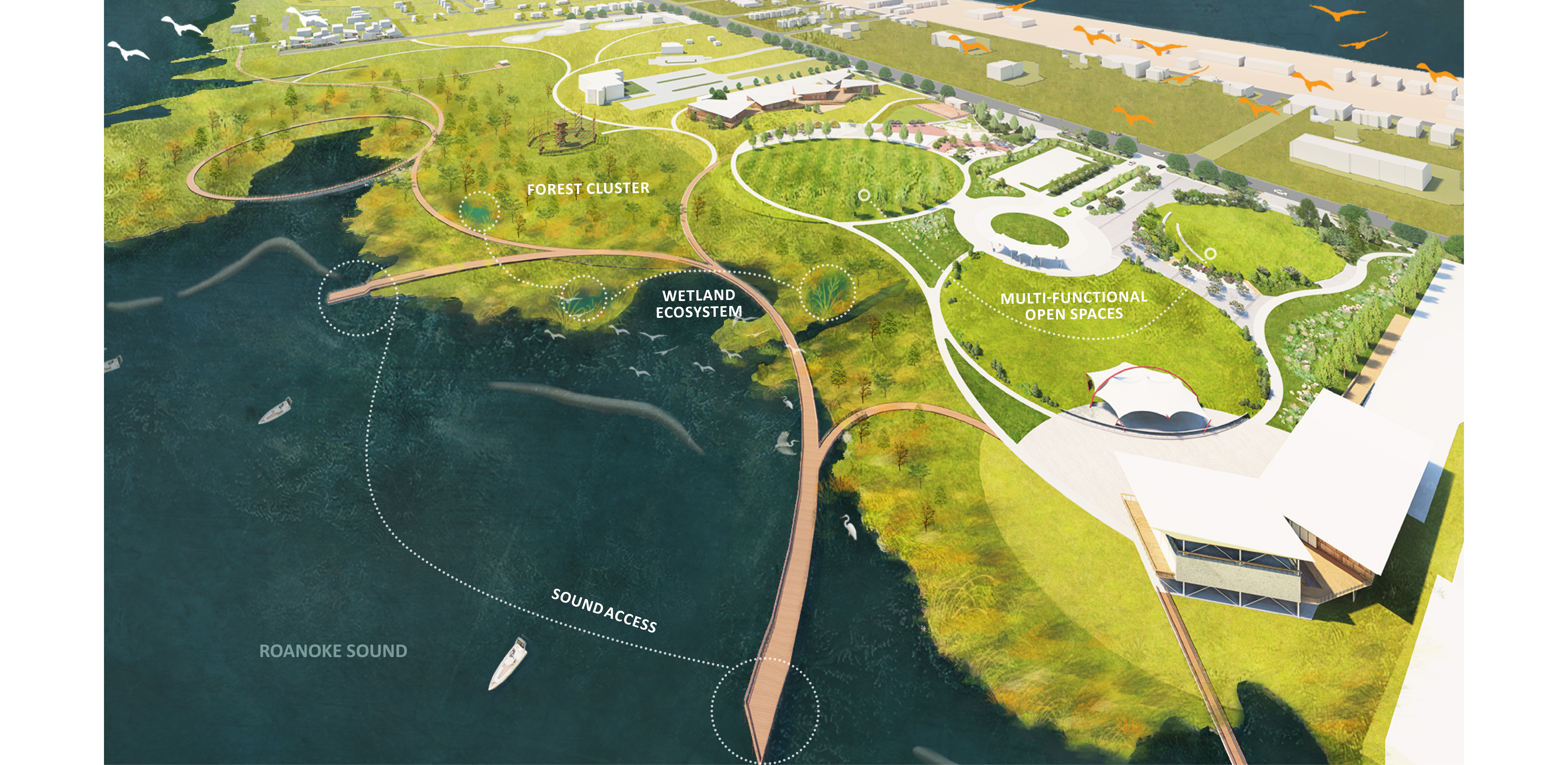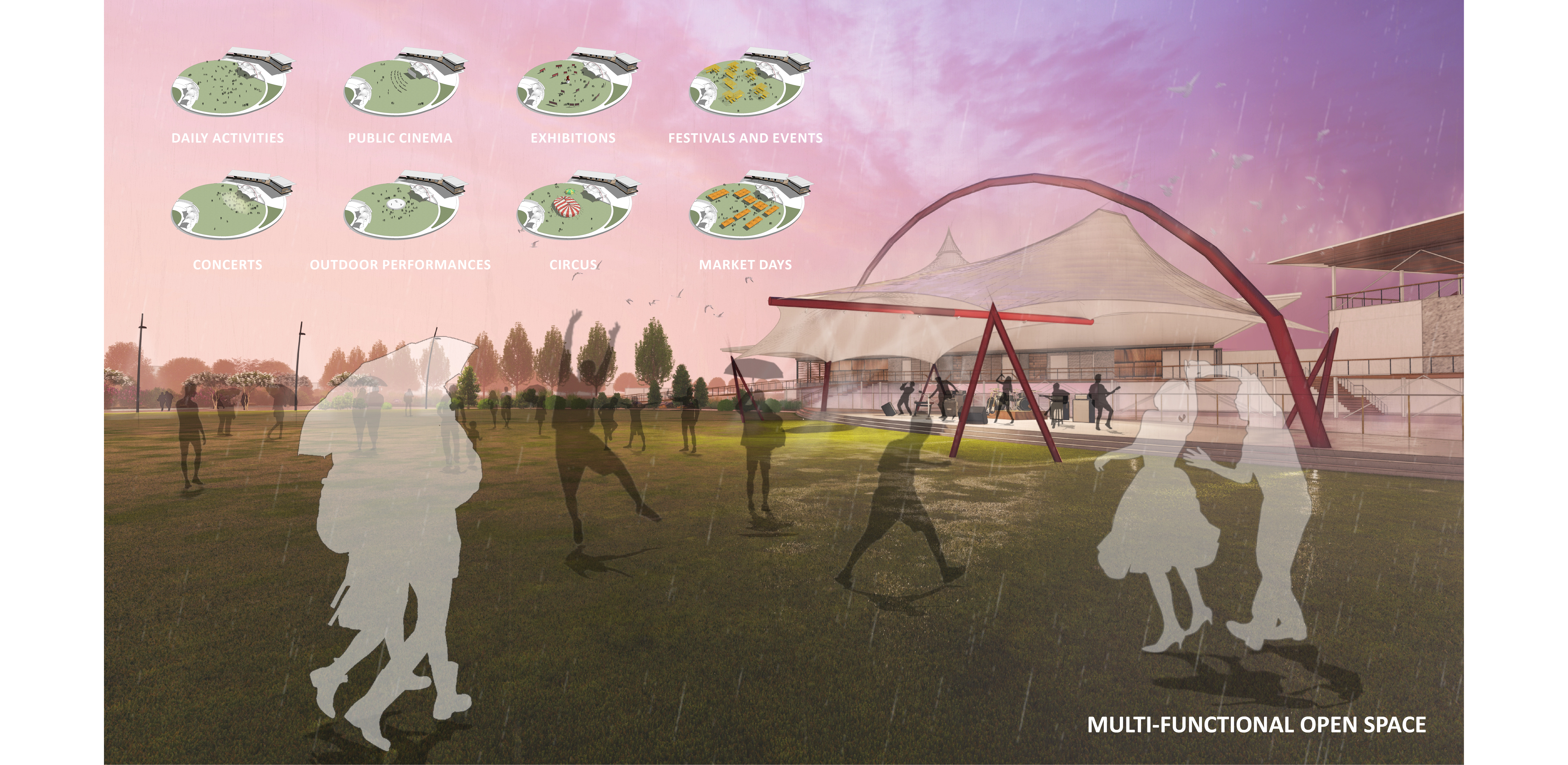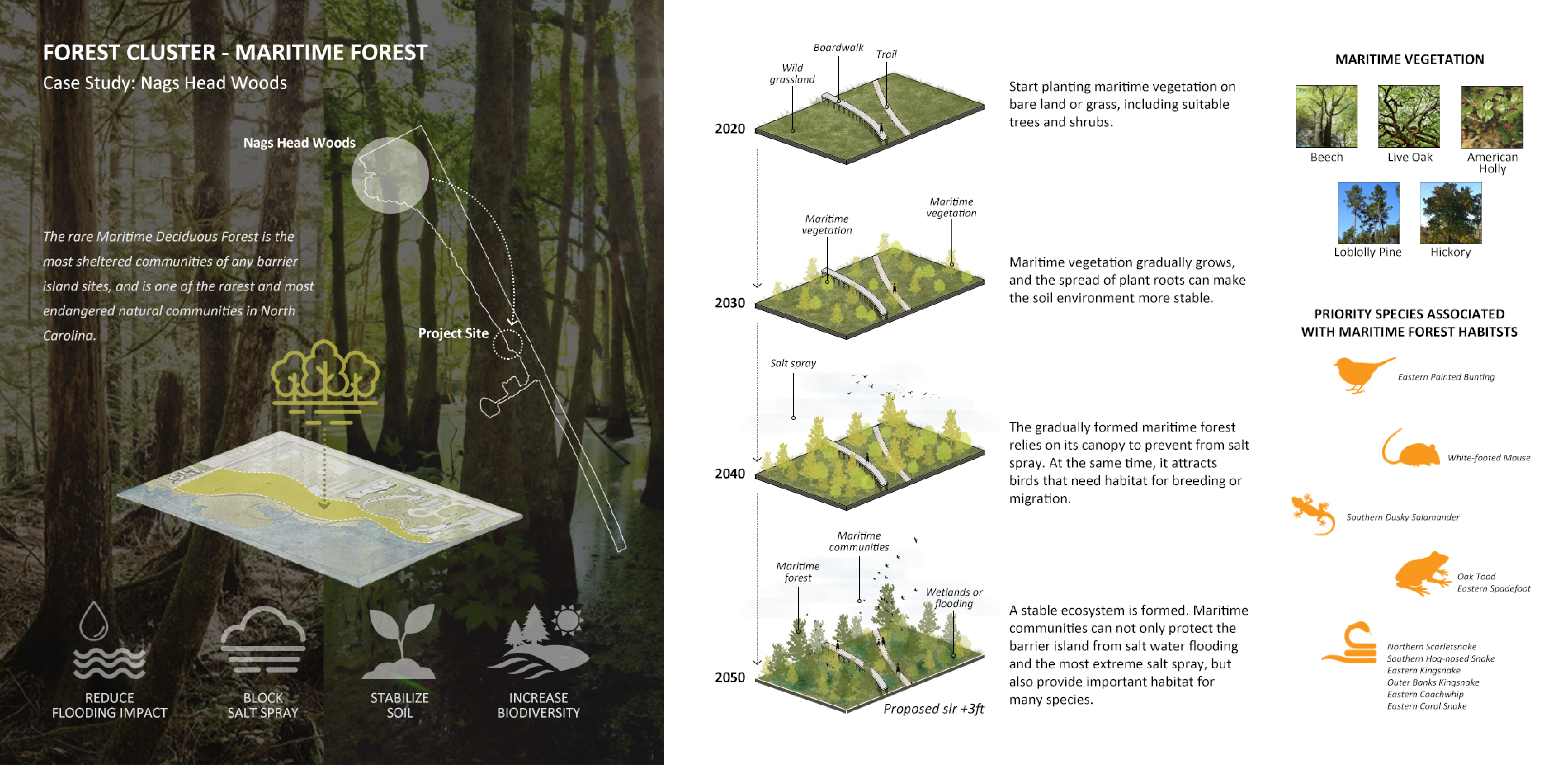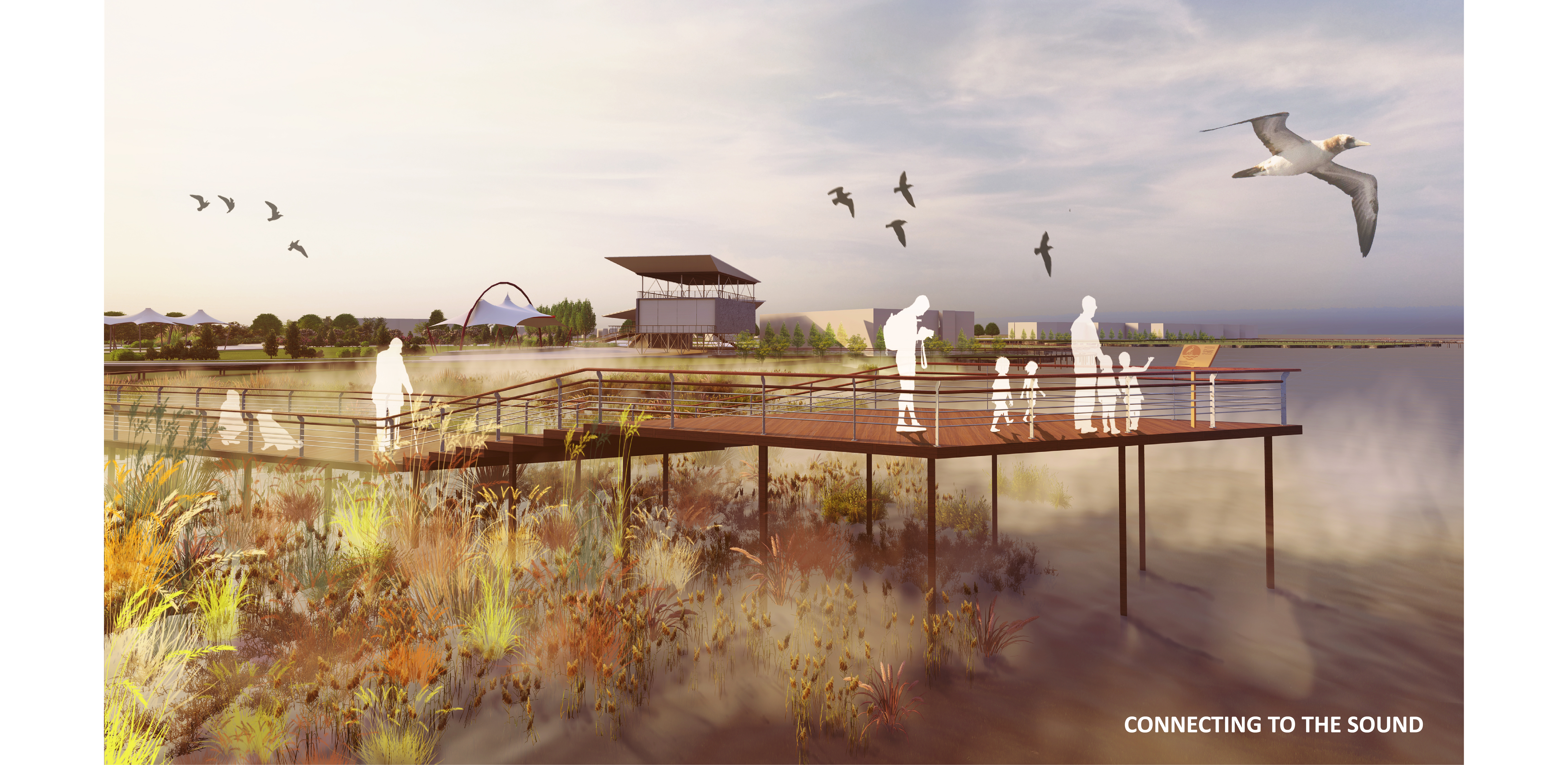Sound Design: Reconnecting the Coastal Edge
Honor Award
General Design
Xinyi Liu, Student ASLA; Xinyu Li, Student ASLA
Faculty Advisors: Andrew Fox, FASLA
North Carolina State University College of Design
Climate change and sea-level rise threaten the economy, environment, and well-being of Nags Head, North Carolina, with some projections predicting up to 98 percent land loss, but adoption of sustainable strategies could position the town as a model of coastal planning. Through the creation of a living coastline replete with oysters as well as landside bio-swales and retention ponds to manage stormwater, Nags Head will gain a wave-breaking marshland barrier and reduce its runoff erosion. This plan also implements connectivity through boardwalks and pathways that promote public access to and stewardship of this at-risk natural resource.
- 2020 Awards Jury
Project Credits
Project collaborator
Shuang Wu
Project collaborator
Rajvee Patel
Project collaborator
Keval Amin
Project advisor
David Hill, FAIA
Project advisor
Ranji Ranjithan, PhD
Project advisor
Madalyn Baldwin, Associate ASLA
Project advisor
Travis Klondike, ASLA
Project Statement
The Sound Design project proposes a new civic space for the Town of Nags Head, North Carolina. Nags Head is a coastal community located on the Outer Banks, which situates it as a premier location replete with beautiful and rich natural resources. These characteristics make it an attractive place to live, work and visit. The project is organized around three main issues: ENVIRONMENT, ECONOMY, and WELL-BEING. Using these foci, the project aims to promote a coastal lifestyle that preserves coastal heritage while reducing the impacts of climate change through the use of adaptive, sustainable and connective strategies. The primary design elements include: shoreline management, multi-functional open spaces, and a publicly accessible sound-side circulation system that fulfills the needs of the community while reconnecting the critical ecologies along the coastal edge. The goal of this proposal is to create a model landscape for future soundside planning.
Project Narrative
OVERVIEW
Coastal ecosystems in the Outer Banks of North Carolina are some of the most biologically productive and ecologically valuable resources in the mid-Atlantic region. However, the Town of Nags Head’s location has made it vulnerable to hazards related to climate change, such as sea level rise and flooding. The changing climate will impact most of the shoreline areas that provide aesthetic, natural, recreational, and storm protective value to the town and private property owners. As an oceanside tourist destination, these environmental issues are exacerbated by the drastic seasonal demographic change Nags Head experiences every year. It will eventually bring immense social, cultural, and economic pressures to the town.
To truly tap the potential of Nags Head, the environmental threats that could devastate the region over the coming decades need to be addressed. Also, improvements and additions need to be made to the infrastructure, attractions, housing developments, and recreational spaces to promote the well-being and economic interests of the community and tourists alike.
The project was organized around four main objectives: 1) design the site to adapt to stresses and shocks resulting from global climate change; 2) preserve the existing natural heritage and promote them as civic infrastructure assets; 3) encourage active, healthy lifestyles; and 4) use landscape solutions to address economic development challenges unique to this coastal community.
NAGS HEAD BACKGROUND
The history of Nags Head before the 1830s is relatively obscure, but by the late 19th century the region was developing a small yet devout fan base of wealthy visitors. Unlike other regions of the Outer Banks that did not experience a developmental boom until the latter half of the 1900s, Nags Head has remained popular for well over a century.
Nags Head has succeeded as a vacation hotspot due to its rich coastal resources and natural heritage. In 2015, Jockey’s Ridge Park hosted 1,301,405 tourists. While this benefited the local economy, it also placed environmental stress on the region. The seasonal demographic change has been a challenge to the development of the town.
Natural hazards are common in Nags Head and have therefore impacted the town’s development. The entire geography of this chain of barrier islands has been shaped and altered throughout the centuries by passing storms and hurricanes. The Ash Wednesday Storm of 1962 is a prominent example. It was one of the most devastating storms on record and hung around the Outer Banks for days. The coastline was subsequently drenched with unending pounding rain, storm surges, and constant high-speed winds. As a result, countless hotels, homes, and businesses were destroyed and the Town took years to recover.
The abundant natural resources and tourist attractions, as well as the threat of natural hazards for many years, have shaped what Nags Head is today.
CLIMATE CHANGE IMPACT
The site is facing drastic impacts from the following environmental issues: sea level rise, flooding, and erosion. According to worst-case projections, there will be an over 98% land loss by 2100 if no protective measures are taken. The whole town already sits within one of the three flood zones. Most residential, commercial, and recreational areas within the town currently face issues with flooding from storm surges and sunny-day floods. This, in turn, causes erosion. Sea level rise in the coming decades will make these problems much worse. Since 1817, over 3000 ft of estuarine shoreline was lost in Roanoke Sound.
These pressing challenges require solutions to protect current and future structures and to reduce the harmful impact of climate change. The project aims to address these three issues by creating opportunities through landscape interventions.
DESIGN FRAMEWORK
This project investigated existing issues and opportunities of the site through the lenses of environment, economy and well-being. This led to the development of programs centered on three guiding principles: Adapt, Sustain, and Connect. The overarching goal is to adapt to climate change and protect coastal heritage to preserve the environment's natural integrity, enhance recreational programs to improve the local economy and bring convenience to residents and visitors, and create multi-functional open spaces that encourage healthy lifestyles and social interactions.
DESIGN CONCEPT
+ ADAPT
This concept focuses on adapting to climate change and provides equitable access to the sound that fulfills people’s desires to connect to the coastal edge. In addition, it creates enough open spaces for people’s various recreational and social interests.
+ SUSTAIN
This concept aims to bring environmental benefit to the coastal community through the preservation of the environmental and cultural heritage of Nags Head. Design features develop natural infrastructures across the site to address the issue of flooding through the creation of a sustainable stormwater system.
+ CONNECT
This concept aims to improve the connectivity of the site by providing an efficient circulation system and designing a streetscape along the adjacent highway. It also brings benefit to the community by providing public access to surrounding recreation facilities and creating possibilities for people to explore the sound.
DESIGN STRATEGIES
Living Shoreline
The project proposes living shoreline solutions to adapt to climate change in Nags Head. Living breakwaters will be composed of eco-friendly materials such as reef balls, and oysters. They will help to reduce wave and current energy while creating healthy marshland ecosystems for marine life.
Stormwater Management
The project develops stormwater management to adapt to the challenge of flooding. Based on Nags Head's Stormwater Management Ordinance and sustainable concepts, this project uses specific measures such as planning multiple green infrastructures in the park. Various rain gardens, bio-swales and bioretention will function to slow and purify surface runoff. This approach will reduce the pressure of urban underground pipelines and prepare for water recycling.
Circulation Development
Based on preliminary surveys of the area, the existing site lacks accessibility and walkability. People have difficulty reaching the sound. Therefore, the project explores different ways to develop a circulation system within the site. Sidewalks and bike lanes connect the site to the surrounding housing and recreational programs. Well-designed park pathways reduce barriers to the park’s facilities and enrich the visitor experience. The boardwalk and trail system engages people by allowing them to get close to the soundside waterfront.
Multi-functional Open Spaces
There is a great need for daily-use and event-use areas in Town of Nags Head, especially when it’s on season. Therefore, various lawns divided by the pathway will serve as multi-functional areas to engage people experiencing the park in a variety of ways. These green open spaces can be used to hold various public events, such as concerts, festivals, open markets, outdoor performances, and public gatherings.
Planting Design
This project specifies plant selection based on the Town of Nags Head Vegetative Planting Guidelines. The selected plants are resilient, tolerate salt and alkali, and will soften the appearance of parking lots and large structures. The local plant library is used as a model to gradually establish the plant community of the soundside area. The large trees and shrubs, such as live oaks and southern wax myrtle, near the highway provide shading for pedestrians and block noise from the traffic. The lawns feature mostly evergreen small trees and shrubs to preserve the natural viewshed. Near the shoreline, the existing natural landforms protect the wetlands and salt marshland.
Forest Cluster
Inspired by Nags Head Woods, the Maritime Forest will be planted and gradually develop in the wild spaces of the site. The Forest is dominated by Beech, American Holly, Loblolly Pine and Hickory. There will also be dense shrubs and vines and a moderate herb layer present. Maritime communities will increase biodiversity and stabilize the soil to reduce flooding impact and eventually create a vital ecosystem. The establishment of the Maritime Forest is a long-term sustainable plan. The proposal intends to treat the site as a dynamic observation model in the hope of building a stable ecosystem along the entire coastline.



